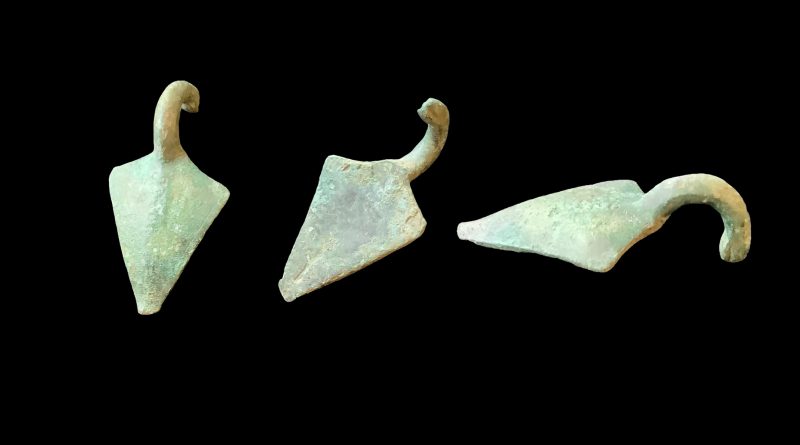Anglo-Saxon mount
Richard Lyon sent in images of this find and asked for it to be identified. He said it came off a predominantly Roman site, which also gave up the occasional Bronze and Iron Age finds.
The illustrations show the find is triangular in shape, with one short side and two longer ones. Attached to the short side is a curved element with a zoomorphic tip. This is actually an Anglo-Saxon mount, which, with others, would have been fixed to the rim of a copper-alloy bowl.
Anglo-Saxon bowls date from the late 6th into the 7th century. The metal had to be beaten out from ingots, which would have been a lengthy process. When a sheet was ready a disc would be cut to shape and then raised up into the shape of a bowl. Mounts would then be fixed to the upper edge and chains, for hanging, would be attached to the curved element.
Richard’s find has no decoration but the finest mounts can have complicated decoration inlaid with enamel. This is similar to British-made enamel work produced between circa 50 BC and 100AD and to a lesser extent thereafter. It highlights the fact that in the decorative arts some British workshops were not dominated by Anglo-Saxon art styles.
When I asked Richard if any other Anglo-Saxon items had turned up on the site he said only a single stirrup-strap mount so far. However, he added that another part of the same farm is supposed to have an Anglo-Saxon field system but it is very quiet. The bowl mount may well be a stray from the Anglo-Saxon area. Whatever is the case, even if it is quiet it would certainly be worthwhile searching again.
Valuation
Coin Valuation Service
Have your coin or artefact valued using my free online coin valuation service

